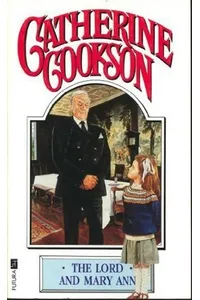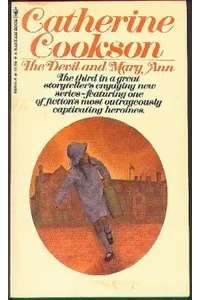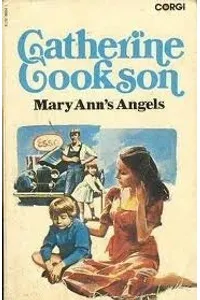Step into the gritty, heartwarming world of Mary Ann Shaughnessy, where a young girl’s fierce spirit battles the hardships of poverty in Tyneside, North East England! Written by the beloved Catherine Cookson, the Mary Ann Shaughnessy series is a nine-book saga blending historical fiction and family drama. With its relatable heroine and universal themes of resilience, love, and hope, this series has captivated readers for decades, proving that even in the toughest times, determination can light the way.
From her dockside tenement to moments of triumph, Mary Ann’s journey is a testament to the human spirit. Whether you’re a fan of historical novels or simply love a strong female lead, this series offers a deeply human story that’s hard to put down.
How Mary Ann Shaughnessy Began
Catherine Cookson, born in poverty in South Shields, drew heavily from her own life to create Mary Ann Shaughnessy. Launched in 1954 with A Grand Man, the series reflects Cookson’s intimate knowledge of Tyneside’s working-class struggles. Her own childhood, marked by hardship and an alcoholic mother, shaped Mary Ann’s world. Cookson’s goal was to craft a historical narrative, not just a romance, weaving authentic settings and emotional depth into a character-driven saga that resonated globally.
The series grew organically as Cookson returned to Mary Ann over nearly 40 years, driven by her love for the character and her readers’ enthusiasm. Its raw depiction of poverty and hope struck a chord, establishing Cookson as a literary icon.
The Heart of Mary Ann Shaughnessy
The series kicks off with A Grand Man (1954), introducing eight-year-old Mary Ann, fiercely devoted to her father despite his flaws. She schemes to secure him a job, showcasing her tenacity. In The Lord and Mary Ann (1956), Mary Ann navigates life on a farm, forming a bond with the farm’s owner, Mr. Lord, while facing threats to her family’s stability. The Devil and Mary Ann (1958) sees her sent to a convent school, clashing with its strict rules but staying true to her spirited nature. By Bill and The Mary Ann Shaughnessy (1991), the final book, Mary Ann is a mother, her journey culminating in a heartfelt conclusion.
Set against Tyneside’s coal docks and tenements, the series explores poverty, family loyalty, and the pursuit of a better life. Cookson’s vivid prose and Mary Ann’s unyielding optimism bring humor and warmth to grim realities. Themes of resilience and love shine through, making the series timeless and relatable across generations.
Cookson’s style avoids sentimentality, grounding her stories in authentic dialogue and detailed settings. Fans cherish Mary Ann’s growth from a plucky child to a determined woman, with each book adding depth to her saga.
Why Mary Ann Shaughnessy Resonates
The Mary Ann Shaughnessy series left an indelible mark on historical fiction, inspiring countless readers with its strong female protagonist. Its universal themes—overcoming adversity, family bonds, and chasing dreams—transcend its Tyneside setting, earning a global audience. Adapted into the 1956 film Jacqueline (based on A Grand Man), the series also found success on screen, cementing its cultural impact.
Decades later, Mary Ann remains a literary icon, her story a beacon for those facing their own struggles. Cookson’s legacy endures through her empathetic storytelling, making the series a must-read for fans of character-driven narratives.
- First Book: A Grand Man (1954)
- Last Book: Bill and The Mary Ann Shaughnessy (1991)
- Total Books: Nine
- Setting: Tyneside, North East England
Grab A Grand Man and dive into Mary Ann Shaughnessy’s inspiring world of grit, heart, and hope!








